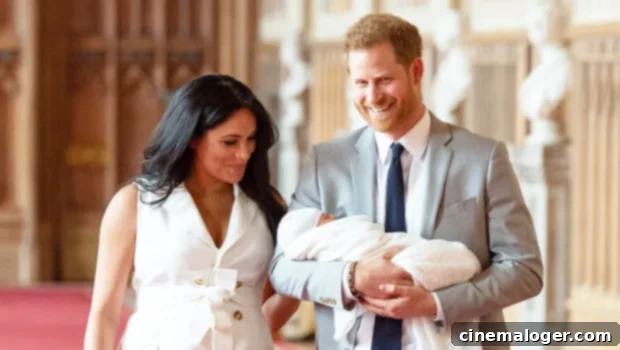Unveiling the Truth: Why Prince Harry and Meghan’s Children Lack HRH Titles Due to an Ancient Royal Rule, Not Race
The royal status of Prince Harry and Meghan Markle’s children, Archie Harrison Mountbatten-Windsor and Lilibet Diana Mountbatten-Windsor, has been a subject of intense public debate and media scrutiny. This topic gained significant traction following the couple’s highly anticipated primetime interview with Oprah Winfrey on March 7. During the CBS special, the Duchess of Sussex, 39 at the time, made a significant claim: while pregnant with her first child, Archie, her royal in-laws expressed a desire for him not to be a prince. She described this as a departure from established “protocol” and further revealed to a visibly shocked Oprah that the family also indicated the baby “wasn’t going to receive security.”
Meghan emphasized the unprecedented nature of this decision, highlighting that her child would be “the first member of color” in the royal family and would not be “titled in the same way that [the] other grandchildren would be.” This statement ignited a global conversation about the intersection of tradition, race, and royal protocol within the British monarchy.
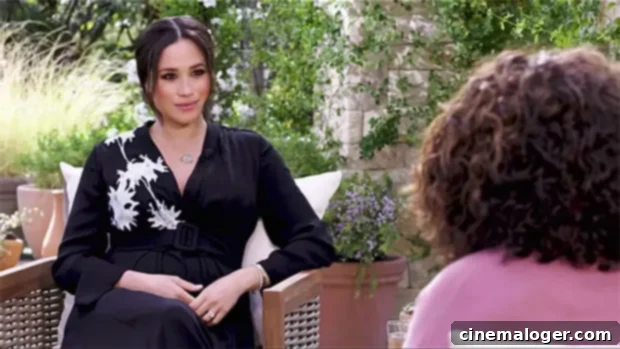
The Historical Roots of Royal Titles: King George V’s 1917 Letters Patent
However, esteemed royal historian Marlene Koenig offers a different perspective, asserting that the lack of HRH titles for Archie and Lilibet stems not from racial bias but from a long-standing, well-established royal rule. According to Koenig, a recognized expert on British and European royalty, Prince Harry and Meghan can trace the origins of their children’s title situation back to the Queen’s late grandfather, King George V. “This is not a racial issue,” Koenig firmly tells HollywoodLife. “Meghan tried to make it that, but [it] wasn’t. Press coverage, yes, but not the issue about Archie, because that has been long planned.”
Koenig explains that George V formally determined Archie and Lilibet’s potential status in his 1917 Letters Patent. This document, she clarifies, is a sovereign-issued decree, a formal declaration from the monarch. While not a piece of legislation passed by Parliament, it carries significant weight within the royal sphere. “It’s a way to inform. It’s not a law,” Marlene elaborates. “It’s just a document, because the sovereign is known as the fount of all honors. The succession to the throne is through legislation. Titles come from the sovereign.” This distinction is crucial: while parliamentary acts govern who sits on the throne, the monarch traditionally bestows or regulates titles through instruments like Letters Patent.
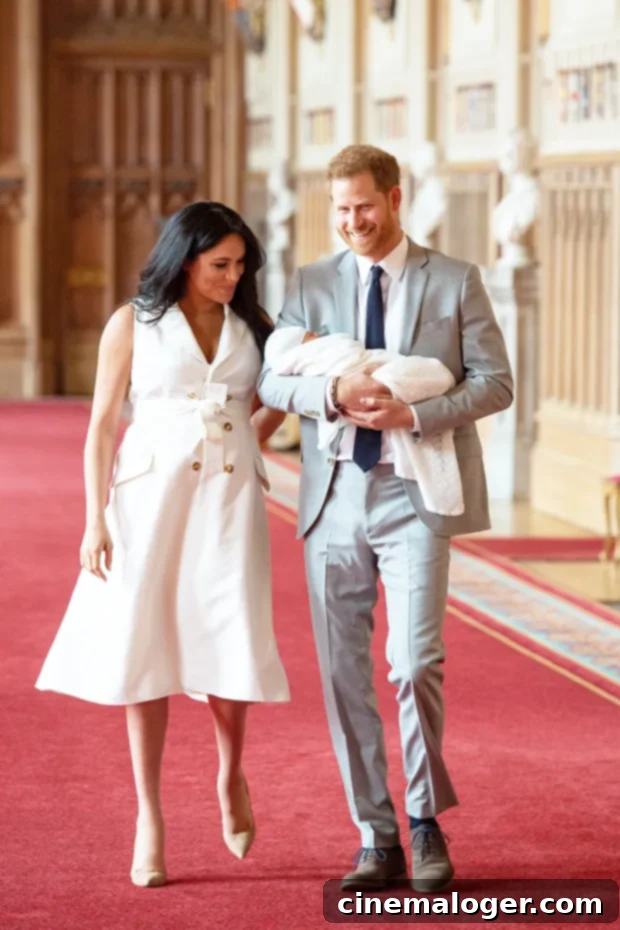
The Purpose and Precedent of Letters Patent
The use of Letters Patent by the sovereign is not unique to George V. Queen Elizabeth II herself has issued similar documents to clarify or amend royal protocols. A notable example occurred in 1996, following the high-profile divorces of Prince Charles and Princess Diana, and Prince Andrew and Sarah Ferguson. At that time, “the Queen issued a Letters Patent that states that former wives of spouses who are royal highnesses, lose the HRH” status, meaning they no longer carried the style of Her Royal Highness. This demonstrates the enduring power of these monarchical declarations in shaping the landscape of royal titles and privileges.
Marlene Koenig speculates that George V issued his influential Letters Patent regarding titles in 1917 with a clear objective: to “limit the number of royals, or rather the generations.” This decision came during a period of significant change for the British monarchy, especially with the anti-German sentiment of World War I leading to the adoption of the House of Windsor name. George V aimed to streamline and modernize the monarchy, ensuring that only those closest to the line of succession held prominent royal styles. Koenig explains the historical context: “When he got married and had his first children – including the future Edward VIII, Duke of Windsor – they were great-grandchildren of Queen Victoria. That was in 1894 [when Edward VIII was born]. We would not have that [scenario] again until 2013 when Prince George was born.” Indeed, Prince George, like Archie, is a great-grandson of a reigning monarch (Queen Elizabeth II), making the historical precedent highly relevant.
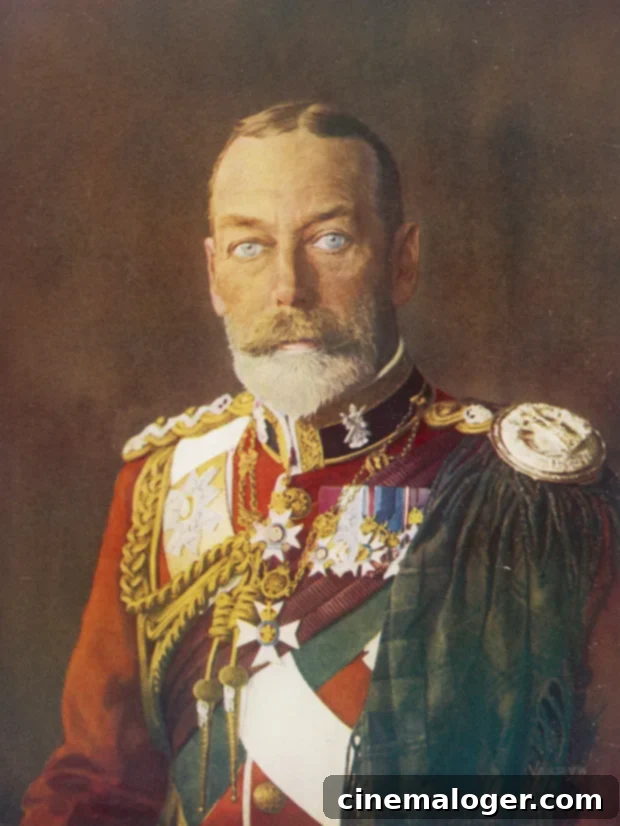
The specific wording of George V’s 1917 Letters Patent is critical to understanding the current situation. It declared that “The grandchildren of the sons of any such sovereign in the direct male line (save only the eldest living son of the eldest living son of the Prince of Wales) shall have and enjoy in all occasions the style and title enjoyed by the children of dukes of this realm.” This seemingly complex phrasing has precise implications for who would automatically inherit royal titles.
The 2013 Amendment and Its Impact on Generations
In simpler terms, this original rule dictated that only the eldest male grandchild of the reigning monarch’s son (the Prince of Wales) would automatically receive the title of Prince and the style of HRH. Had this rule remained unchanged, the only grandchild of Prince Charles to be granted royal status by birth would have been Prince William’s firstborn male child. This means that, under the strict interpretation of the 1917 rule, even William’s daughter Charlotte and younger son Louis would not have automatically been styled as Prince or Princess. This highlights the restrictive nature of George V’s original decree.
However, recognizing the changing social landscape and the need for gender equality in the line of succession, Queen Elizabeth II intervened. In January 2013, just months before Prince George’s birth, the Queen issued another Letters Patent. This crucial amendment to the 1917 decree declared that all of Prince William and Kate Middleton’schildren – regardless of their gender – would be styled as Prince or Princess and carry the HRH designation. This ensured that Princess Charlotte and Prince Louis, in addition to Prince George, would hold these titles.
Marlene Koenig emphasizes that this 2013 amendment was a pivotal moment. “Now, if Harry’s children were to be royal at birth, it would have happened then,” she explains. “It would have said, ‘All children of all the sons of the Prince of Wales.’ It didn’t. So, that’s not a snub.” The wording of the 2013 amendment specifically expanded the titles only to the children of *the eldest son of the Prince of Wales* (i.e., Prince William), not to the children of *all* sons of the Prince of Wales. Therefore, the absence of titles for Archie and Lilibet is a direct consequence of this historical and recently amended protocol, established long before Prince Harry met Meghan and irrespective of her heritage. This underscores that their status is a matter of established lineage rules rather than a targeted decision. It is important to note, however, that when Prince Charles ascends to the throne, he will have the prerogative to issue new Letters Patent, potentially granting royal titles to his grandchildren, Archie and Lilibet, should he choose to do so.
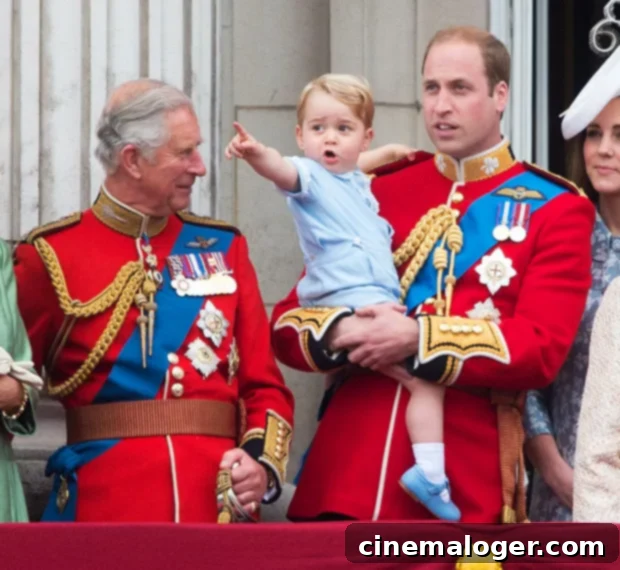
The Link Between Titles, Status, and Royal Security
The discussion around royal titles is often inextricably linked to the provision of security. Marlene Koenig concedes that the two issues are indeed tied, primarily because official, state-funded protection is typically offered exclusively to working royals. “You have to remember that there has been for years criticism of the cost of security of royal events and royal folks,” she notes. This ongoing public debate over taxpayer money being spent on royal security has led to stringent policies. Koenig highlights a significant precedent: Prince Andrew’s daughters, Princesses Beatrice and Eugenie, lost their 24-hour state-funded protection years ago due to budget cuts and their status as non-working royals, despite being princesses by birth.
At the time of Archie’s birth in May 2019, both his parents, Prince Harry and Meghan, were still senior working royals. As such, Archie, by virtue of being with his parents, would have naturally received the protection afforded to them. “As a child, he’s with his parents, he’s going to certainly be protected by those who guard his parents,” Marlene confirms, referring to the immediate security measures that would have been in place for the Sussex family.
However, this situation irrevocably changed. The Duke and Duchess of Sussex made the decision to step down as senior working members of the monarchy, transitioning to a life of financial independence. This move, dubbed “Megxit” by the media, fundamentally altered their status within the royal framework. Consequently, as non-working royals, they and their children no longer qualify for the same level of state-funded security that is provided to full-time members of the Royal Family. This underscores a crucial operational reality: state protection is a resource tied directly to official royal duties and public service, a privilege and responsibility that Harry and Meghan chose to relinquish.
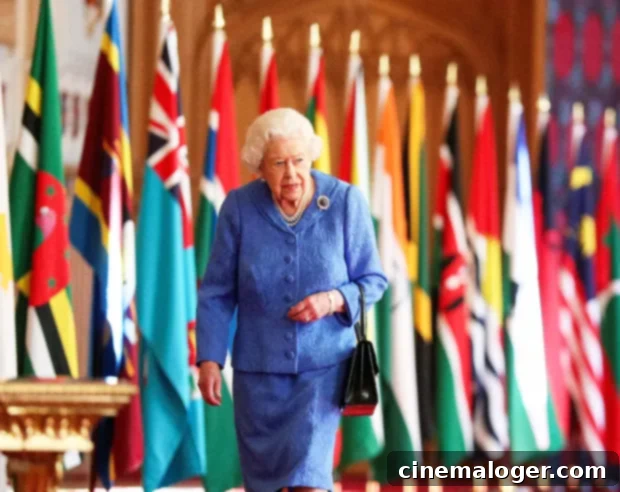
Addressing the Broader Issue of Racism in the Monarchy
While Marlene Koenig firmly believes that the specific issue of Archie’s lack of royal status is rooted in historical protocol rather than race, she does not dismiss the broader allegations of racism within the institution. On the contrary, Koenig acknowledges that the Windsor family faces a significant challenge in this area. “[They] do need to address the issue of racism,” she states emphatically. Her comments resonate particularly strongly given Meghan and Harry’s poignant revelation to Oprah that a member of the family had expressed “concerns and conversations about how dark” Archie’s skin might be. This deeply troubling conversation, regardless of who uttered it, exposed a systemic issue that the monarchy could no longer ignore.
“It’s something they are going to have to confront as a family, as an organization,” Koenig asserts. The candidness of Meghan and Harry’s interview with Oprah brought these underlying issues into the global spotlight, demanding introspection and action from the Royal Family. “And people just have to step back and listen to some things that Meghan said.” The dialogue initiated by the Sussexes, while challenging, has undeniably pushed the monarchy to grapple with its historical legacy and its relevance in a diverse modern world, compelling them to consider how they can better reflect and engage with the society they serve. The debate over titles, while rooted in centuries-old tradition, thus becomes intertwined with the contemporary challenges of identity, inclusion, and the evolving role of monarchy in the 21st century.
